Stories
Phil Fogle
1947-
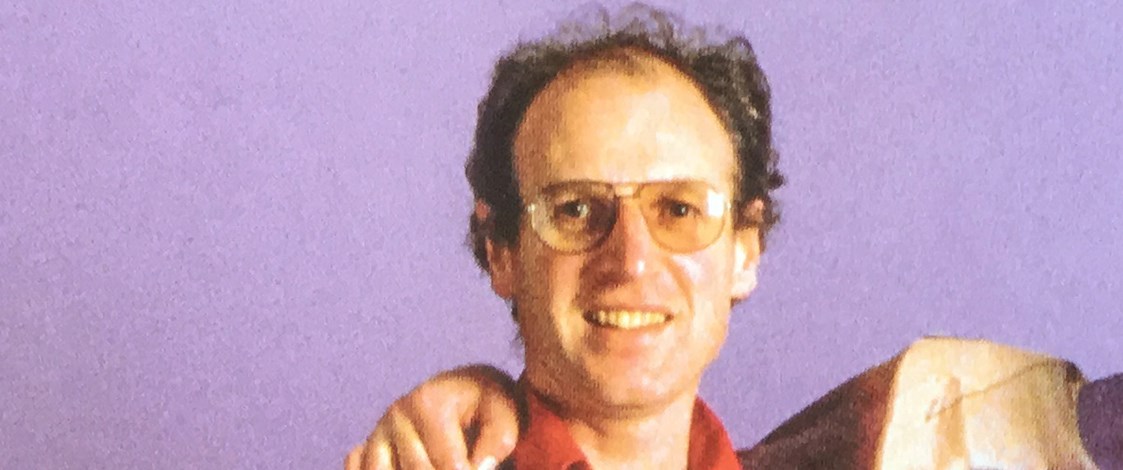
In the late 1970s and early 1980s, a number of new magazines commenced publication, providing photographer Phil Fogle, recently arrived from England, with an outlet for his creative talents.
Teen-zines City Girl and Charlie, fashion bible Fashion Quarterly, women’s magazine More and general interest magazines Metro, North & South and Pacific Way were among the publications his images appeared in.
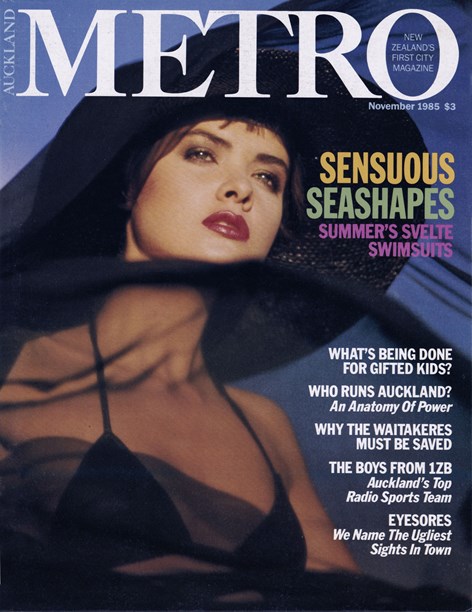
Metro magazine cover photographed by Phil Fogle, 1985.
Born in Stoke-on-Trent in Staffordshire, Phil attended high school in Bournemouth on England’s south coast where his family moved when he was 12. When he left high school, he did a foundation course in art, followed by a Diploma in Fine Art Photography at the London College of Printing.
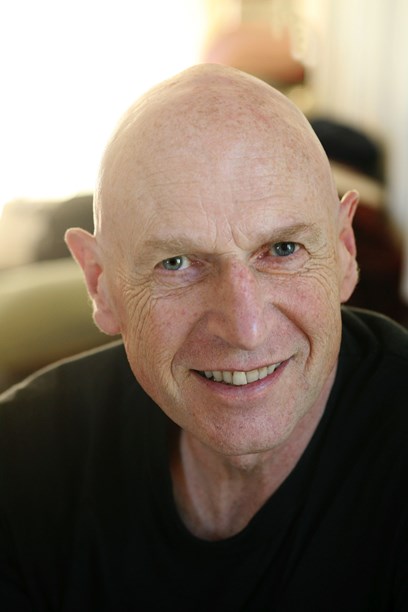
Photo of Phil Fogle by Patrick Byrne. Image © Phil Fogle.
After he graduated, he made a list of his ten favourite photographers and went looking for work. His first job was as an assistant to Donald Silverstein, a notable American photographer whose repertoire included the catalogues for the iconic London fashion emporium Biba.
While working for Silverstein Phil experimented with lith (lithographic) printing, a photographic technique that became his signature. "You get this wonderful sepia-toned, gritty quality where all your blacks have gone completely black but all your highlights have this wonderful smooth tonality. It’s a very specialised technique and I was probably one of only a few people who could do it at the time. I still use it but I do it digitally now."
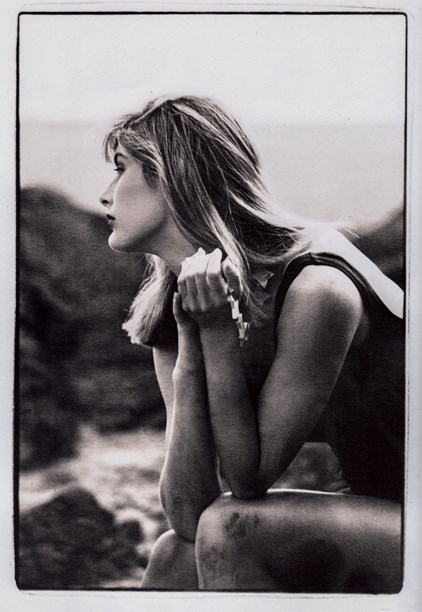
An example of lith printing, this photograph taken by Phil Fogle on Piha Beach in the 1980s, is of a model holding a paua and silver necklace by Fingers jeweller Warwick Freeman. Image © Phil Fogle.
Largely on the strength of his printing skills, Phil landed a job assisting Barry Lategan, the Vogue and Harper’s Bazaar fashion photographer who discovered Twiggy. "We did about six Vogue covers in the year I worked for him," says Phil, "and occasionally I printed for Vogue. I only ever had one of my own pictures appear in the magazine. That was a commissioned advertisement for a fur coat, shot on a model emerging from the bushes on Hampstead Heath – as you did in the 60s and 70s!"
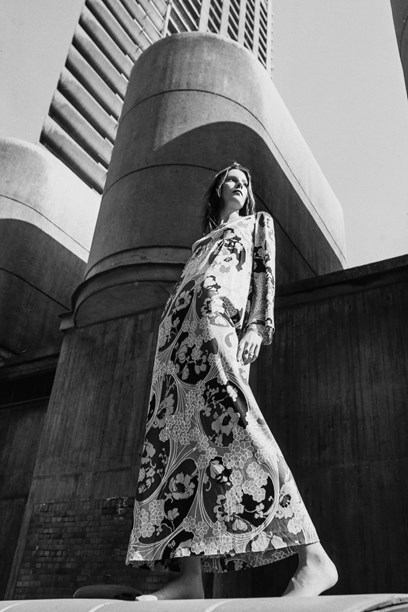
Fashion shot, Barbican Centre, London 1971.
Phil then switched to film, attending the London Film School and gaining a post-graduate Diploma in Film-Making. He worked for a while as a film editor with the BBC, mainly on documentaries. When he was given thousands of feet of film about blackbirds to edit with no logs (accompanying notes), he decided to call it quits.
Phil’s first job when he arrived in New Zealand in 1977 was in-house photographer for a small Auckland advertising agency. A short time later, he opened his own commercial photography studio where he specialised in editorial and advertising photography, shooting everything from fashion to food.
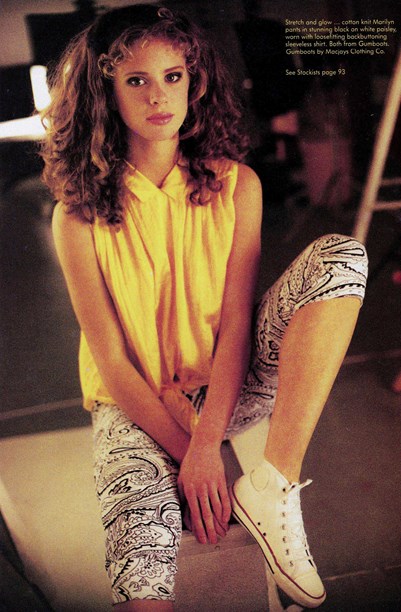
Rachel Hunter poses for Charlie magazine in a Gumboots by Macjays shirt and cotton knit pants, 1980s.
His first regular magazine assignment involved photographing the products for the shopping pages in Metro. As Metro happened to be housed in the same building as More - in a narrow street off Khyber Pass - More became another of his clients. Beginning with portraits and pictures for stories, he graduated to fashion shoots and cover shots and, for several years, was one of More’s main contributing photographers.
Phil Fogle photography for More magazine, 1980s.
His association with More gave Phil the opportunity to promote the work of designer Susan Holmes whom he married in 1982. "Susan was doing fashion work as well as wearable art back then and I was photographing her designs on spec. More would say things like 'oh, we’ve got a cover but don’t know what to put on it' and I’d give them photos of Susan’s clothes. Sue and I kind of piggybacked off each other for a while and that was really nice."
He found Fashion Quarterly editor Paula Ryan equally accommodating. If he was doing a fashion shoot for the magazine she would often find a way to incorporate one of Susan’s garments into the story. For a feature article on Susan in 1987, Phil photographed two of her dresses, dreamy drifts of hand-dyed silk, on Piha Beach, an apt location given the names of the designs - 'Castaway' and 'Fantasy Island'. In addition to fashion shoots, Phil produced portraits for Fashion Quarterly and fashion and beauty still-lifes which Susan sometimes helped to style.
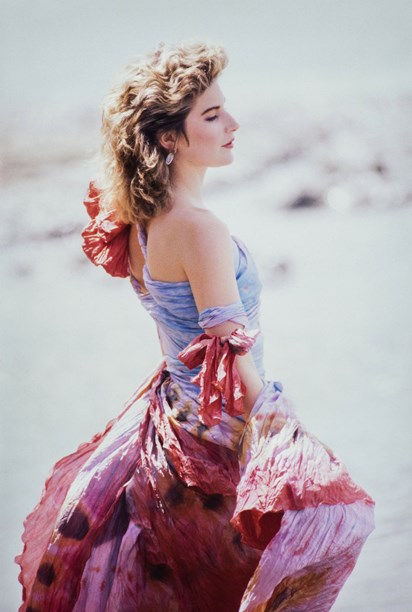
Susan Holmes ‘Castaway’ hand-dyed and painted crinkle silk dress and scarf photographed by Phil Fogle for Fashion Quarterly designer profile, 1987.
In the 1980s, between 50 and 80 per cent of Phil’s work was devoted to fashion. He says the thing he enjoyed most about fashion photography, apart from working with women, was the process itself. "Fashion photography is the one area where photographers are allowed a lot of freedom and creativity. It’s a laboratory in which new techniques evolve then spill over into other things such as reportage or sport. From that point of view, fashion photography is really important."
Phil cites the snapshot style of American Vogue fashion photographer Arthur Elgort, and the boundary-pushing Swiss lensman Hans Feurer as having a major influence on his work. "They were into long lenses and a very spontaneous look. I related to that. Given a flexible brief, I would never plan a shoot. I just let it evolve in a sort of hit-and-run fashion and it worked."
Of his son Sam, a fashion photographer based in New York, he says his is a more deliberate approach. He attributes this to him having assisted photographers who knew exactly what they wanted and whose manner of working was very structured.
Phil gave up photography in 1987 to do a BSc in Physics at the University of Auckland but picked up his camera again in 1991 after completing his degree. At this stage of his career, he did more commercial work and less editorial. While he still illustrated stories for Metro and North & South, his fashion output was confined to advertising campaigns for high street retailers such as Farmers, Glassons and Hallensteins.

Fashion shot for Glassons advertising campaign, 1990s.
In 1997 Phil returned to London for what was intended to be a short visit. He remained for over a decade, completing a MSc in Computer Science at the University of London during his stay.
Since coming back to New Zealand, he has re-entered the photographic profession and works mainly in the field of corporate portraiture. He is currently working on a personal creative project involving portraits of infrastructure workers wearing high visibility clothing, which he hopes to make into a book. "The idea of high vis clothing interests me because while it makes people noticeable, it also makes them invisible as human beings. These are the heroes who keep our infrastructure running and they deserve to be recognised. Even in fashion, there’s a movement towards celebrating everyday people by using them as models."
In 2016, in a nod to his fashion past, Phil Fogle collated a collection of his early photographs of Susan Holmes’ work for her book Susan Holmes. Fabric Artist. He also provided new images for the publication.
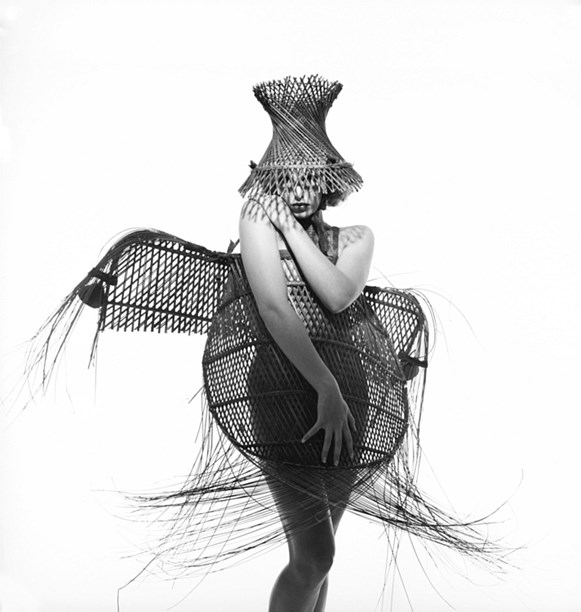
Susan Holmes dress and hat made from a deconstructed wicker-work chair. Wearable Arts Awards entry photographed by Phil Fogle.
But although he gained a reputation as a fashion photographer, he never categorised himself as such, preferring the description 'Jack-of-all-trades'.
Text by Cecilie Geary and Josie Steenhart.
Last published May 2017.